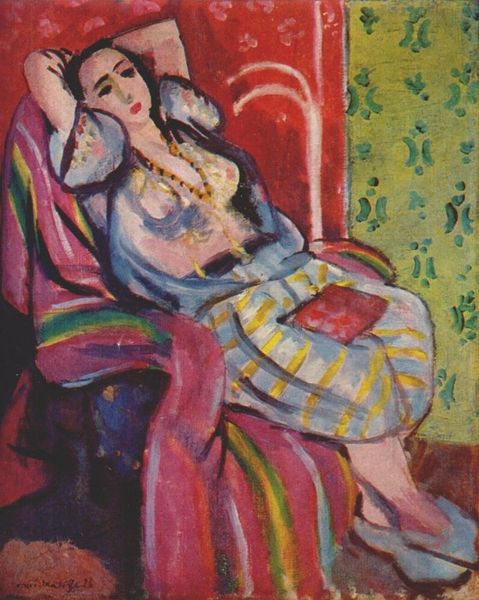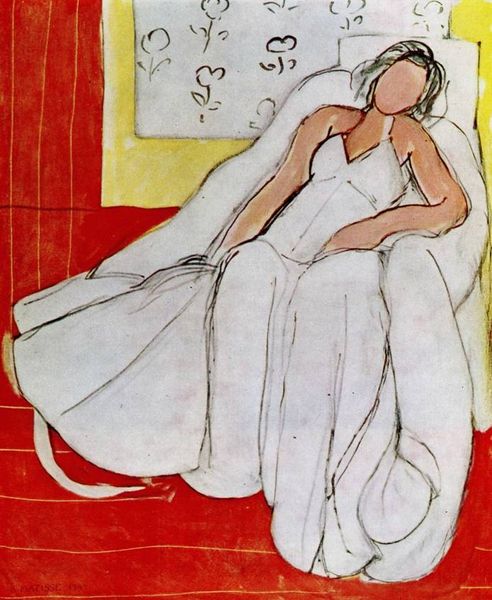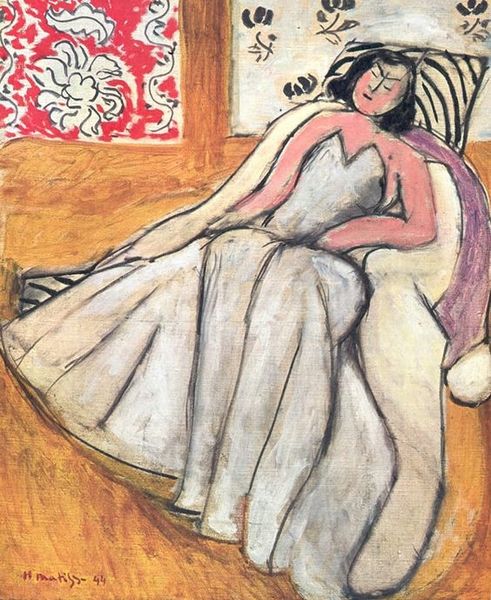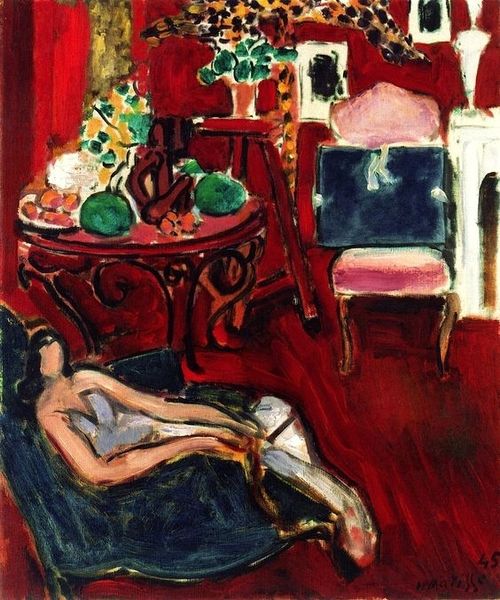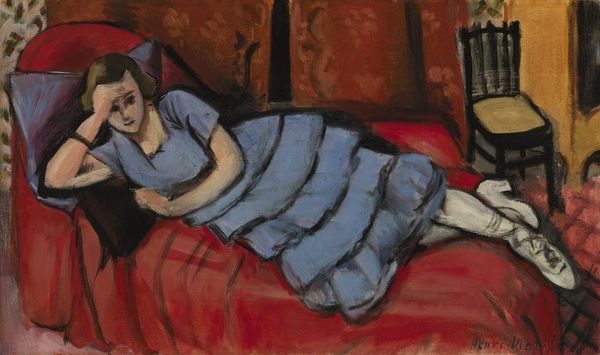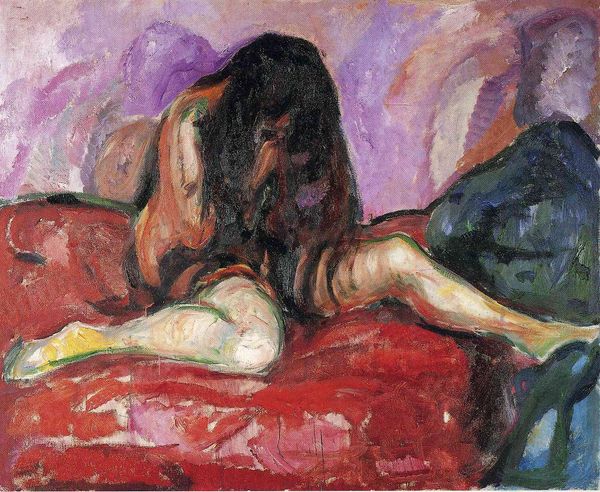
Dimensions: 61 x 74 cm
Copyright: Public domain US
Editor: Here we have Henri Matisse's "Odalisque," painted in 1923 using oil paint. There's something very languid and dreamlike about this piece with the subject reclining amongst all these vibrant colors. How do you interpret this work? Curator: The Odalisque figure carries a complex weight. Consider how the Orient was perceived in Western eyes during this period: a site of fantasy, luxury, and sensual freedom. What cultural narratives do you see playing out through these repeated visual cues? Editor: So, you're saying it’s more than just a beautiful scene? It's loaded with historical context and, potentially, some…misconceptions? Curator: Precisely. Think about the clothing, the pose, even the title. Each element evokes this romanticized vision. The term "odalisque" itself designates a specific role, that of a female servant in a Turkish harem. The imagery and color palette is tied up with historical depictions of the East. What does this cultural memory evoke? Editor: I see what you mean! So it's like Matisse is engaging with, or even perhaps commenting on, this established visual language of Orientalism? Curator: Absolutely! The artist invites us to look critically at this familiar trope. By depicting her, Matisse references a historical narrative but, importantly, the impasto textures of Fauvism add an unexpected tactile experience. Do you think he affirms or subverts the tradition? Editor: This has really shifted my understanding; now I can recognize all the layers of meaning and historical baggage embedded in the symbols he's using! Curator: Visual symbols invite interpretation. What is so striking in this painting is that, in addition to all the implied Orientalism, there is the universal appeal of beauty and harmony, a timeless connection between viewer and subject.
Comments
No comments
Be the first to comment and join the conversation on the ultimate creative platform.
